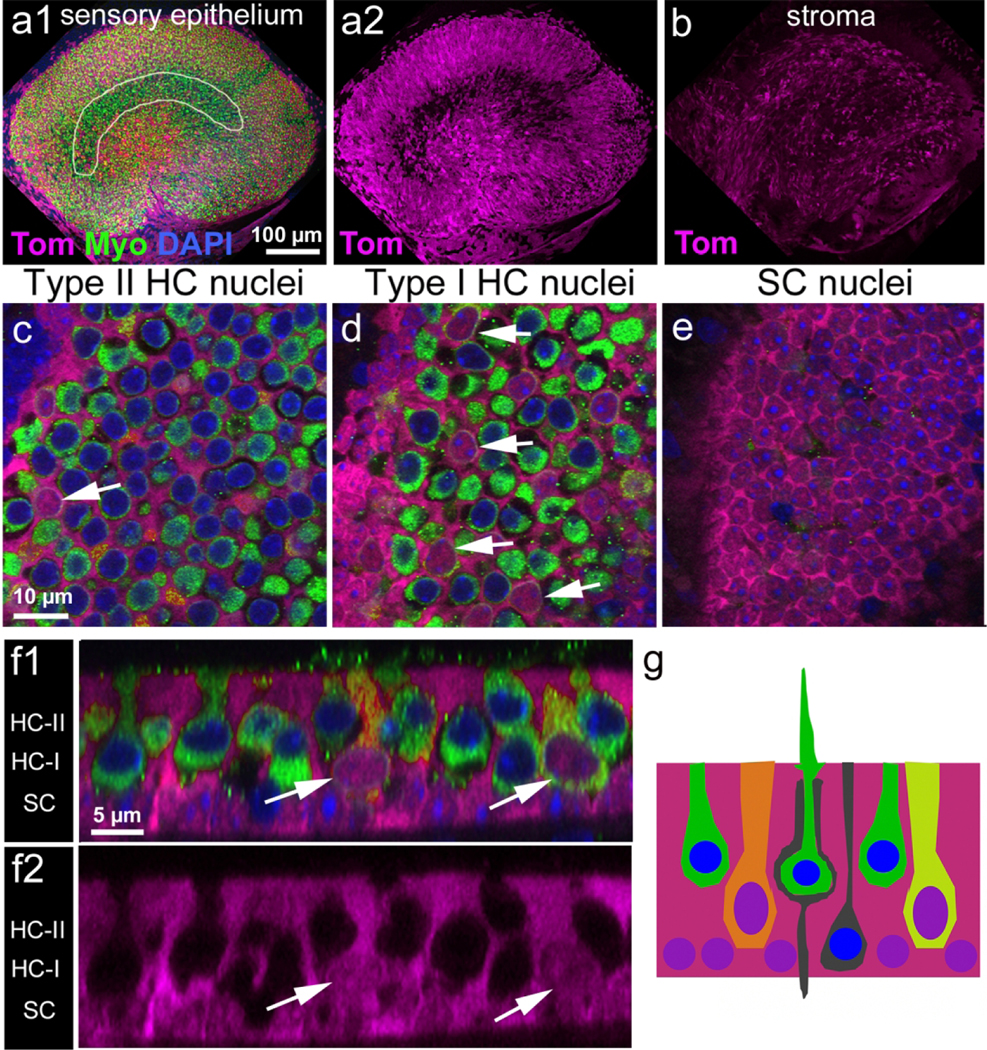Figure 7.

Hair cells added between P2 and P9 remain immature. (a1) Low magnification image of the lumenal surface of the utricle sensory epithelium from a Plp-CreER T2 :Rosa26 tdTomato mouse injected with tamoxifen at P2/P3 and killed at P9. The utricle was labeled with tdTomato (Tom, magenta) and antibodies to myosin VIIa (Myo, green). The approximate position of the striola is outlined in white. (a2) Same field as panel a with tdTomato labeling only. (b) tdTomato labeling in the stroma under the sensory epithelium. (c–e) High-magnification slice images through the sensory epithelium in the positions where Type II hair cell nuclei, Type I hair cell nuclei, and supporting cell nuclei would reside in mature utricles are shown in (c), (d), and (e), respectively. Most tdTomato-labeled hair cells (magenta, arrows) had nuclei located mid-way through the epithelium, where Type I hair cells should normally reside, and they lacked features unique to either Type I hair cells or II hair cells. The extrastriolar region is shown. (f1) Optical cross-sections showing tdTomato-labeled hair cells (arrows) with thick necks and relatively large nuclei. The extrastriolar region is shown. (f2) Same image as shown in (f1), with tdTomato only. In (f1) and (f2), the positions where Type II hair cell nuclei (HC-II), Type I hair cell nuclei (HC-I), and supporting cell nuclei (SC) would reside in mature epithelia are labeled on the left. (g) Diagram showing the types of cells that were tdTomato-positive in utricles at P9. Magenta = tdTomato labeling (in cytoplasm and nuclei); green = myosin VIIa labeling (in cytoplasm); blue = DAPI labeling (in nucleus). All tdTomato-labeled cells had purple nuclei (red plus blue). TdTomato-labeled hair cells had orange or yellow-green cytoplasm (magenta plus green). Scale bar in (a1) pertains to (a1), (a2), and (b); scale bar in (c) pertains to (c–e); scale bar in (f1) pertains to (f1) and (f2)
